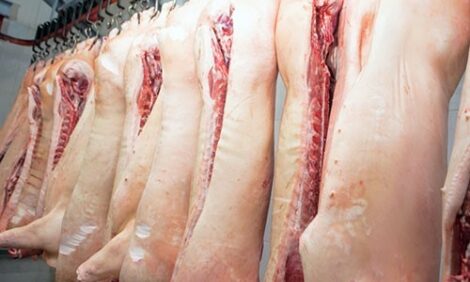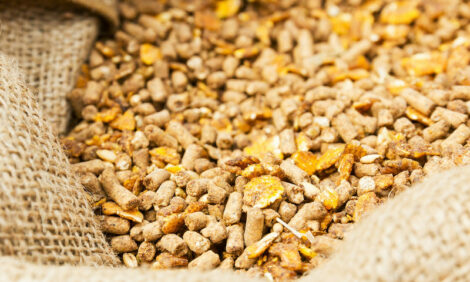



Modern Technology From Big Dutchman
GERMANY - New barn with exhaust air washer for 3,300 piglets.The feed testing farm of Agravis Raiffeisen AG near Cloppenburg, Germany, expanded their barn capacity for piglet rearing with a new barn by 3,300 places to achieve an overall stocking density of 6,500 pigs. That means, in future, feeding concepts can be tested even more intensely. Big Dutchman was successfully able to meet the high demands Agravis had on the housing equipment. During an open day, with which the barn was inaugurated, many visitors were able to see this for themselves.
Optimum equipment for all requirements

For many years now, the testing farm has tested different feed types and recipes for rearing stock, testing the suitability of new raw materials and verifying the effectiveness of feed additives. The main goal is to gain information and create an ideal recipe formula for weaning feed to implement it in innovative piglet feeding concepts. This is the difference between the feed testing farm and a normal farm and is the reason why special equipment is required: systems for dosing of feed with as little feed entrainment as possible with precise weight registration as well as precise data registration require state-of-the-art technology and the respective know-how. Furthermore, the construction of a pig barn close to a forest, as is the case with the feed testing farm, requires the implementation of a high-performance exhaust air washer: again, this calls for Big Dutchman!
Automatic feeder PigNic for weaners
The new piglet rearing barn, a turnkey project realised by Big Dutchman in close cooperation with Brandau Agrarbau, consists of 12 compartments with 10 pens each, housing 26 piglets per pen, as well as an additional sick-pen. The piglets are moved in when they are four weeks old and are resold to local finishing producers once they reach a weight of approximately 32 kg. Every pen is equipped with a bowl drinker, two nipple drinkers and the well-proven Big Dutchma piglet feeder PigNic. PigNic is equipped with two additional drinking nipples which are installed far enough apart to ensure sufficient separation between feed and water but close enough to allow the piglets to wet their feed for a better feed intake. Apart from this, every wet-dry feeder is equipped with a dry feeding valve for weight-based feed discharge.
Precision thanks to know-how
 |
| Compartment with 10 pens – the flooring system consist of a combination of concrete and plastic slats. |
Precise feed discharge and data acquisition are ensured by the computer-controlled DRY EXACT dry feeding system in combination with the feed valves and the MC 99 NT feeding computer:
DRY EXACT allows a weight-based feed discharge at every individual valve. One feed mix may contain up to 14 individual components. A mixing of feed rations is prevented thanks to short empty-runs between the individual portions. With multi-phase feeding at every valve, the feeding sites can be supplied with different individual feed mixes.
The MC 99 NT stands for reliable computer technology. The computer steers the entire system, from monitoring, over to finishing control through to analysis of the entire batch.
The result is a precise calculation of the feed amount, exact proportioning of the individual feed types as well as the exact registration of the feed consumption per day, week or finishing period. This is an important prerequisite for a consistent and thorough comparison of the different feed types.
Exhaust air washer MagixX
 |
| Filter wall 3, consists of root timber |
Since the feed testing farm is located close to a small forest and some residential areas the installation of an efficient exhaust air cleaning system is required. Agravis opted for the sophisticated Big Dutchman exhaust air washer MagixX, which reduces dust, ammonia and odour emissions to a minimum thanks to its three-stage filter system. Depending on the requirements, different cleaning stages are available. The exhaust air is pushed through the filter walls by means of exhaust air fans. For dust, the exhaust air washer achieves a reduction of up to 95%, ammonia is reduced by up to 90% and odours by up to 80%.









